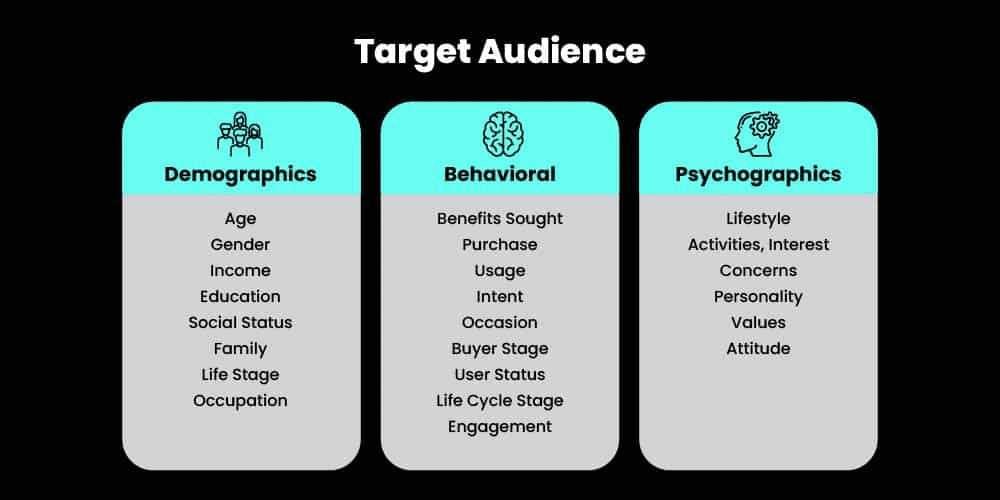Social calling vs. cold calling—which should your business choose as a lead generation strategy? In the constantly evolving world of marketing, this question can be a tough one to answer definitively.
So, in this article, we’ll break down the relative strengths and weaknesses of the two approaches. We’ll also take a look at how effective they are for driving conversions, as well as suggest a few top tips to help you make the most of each process. Let’s compare social calling vs cold calling.
What are social calling and cold calling?
Cold calling needs no introduction. It’s been going on since the invention of the telephone and is still a popular marketing approach today. According to research by Focus Digital, the average cold call conversion rate is around 2%.
This might seem low, but in a B2B context, this can translate into a huge number of leads over time. That said, the modern business marketing environment is a complex place. As companies use ever greater numbers of channels to communicate, traditional cold calling may no longer be enough to guarantee long-term success.
Enter social calling—more generally known as social selling. This technique leverages the power of social media to drive lead generation. Essentially, it’s about engaging with potential clients on social media networks to build your brand reputation.
Depending on the campaign and the target audience, this could take place on big sites such as LinkedIn and Facebook, or on more niche social media platforms like Dribbble or Houzz. The key point is that social selling is all about playing the long game with prospects and building a relationship as a foundation for trust.

Image sourced from icandydesign.com
Social selling vs. cold calling—the key benefits
So, what are the key strengths of these two approaches to lead generation? Here’s a quick overview of the benefits of each method.
Benefits of cold calling
There’s no doubt that cold calling has become more challenging over recent years. For one thing, although the FTC exempts B2B calls from the Do Not Call provisions, an increasing emphasis on data privacy means cold calling can still get you into trouble if you’re not careful. That’s why many businesses now partner with professional B2B cold calling services to ensure compliance, improve outreach quality, and maximize conversion opportunities through structured, data-driven calling campaigns.
For example, many people use their personal smartphones for business purposes, and if you accidentally call a number that’s registered on the no-call list, that takes you into a legal gray area that’s best avoided.
Despite complications like this, however, cold calling has a number of advantages that make it worthwhile, providing you’re careful about how you implement it.
Straightforward to execute
One of the prime benefits of cold calling is that it’s a straightforward process. As long as you do some research beforehand into who to contact, all you need to do is add their details to the list and give them a call. While you’ll also need to do follow-ups on successful conversations, you won’t need to engage across multiple channels. It’s a simple, linear approach.
Direct information about prospects’ needs
Although there’s a lot you can learn from publicly available information about your prospects, there’s no substitute for actually talking to them directly. You’ll discover a lot more in-depth detail about the kind of challenges they’re facing and what their pain points are.
This is great news because it helps you formulate a more relevant pitch, since you have a much better understanding of your prospect’s pain points.

Free-to-use image sourced from Unsplash
Instantaneous feedback
On a related point, you’ll benefit from immediate feedback as well. You’ll learn very quickly how likely it is your prospect is interested in your proposal.
If they are, you’ll have a good idea of how to approach the next conversation, since you’ll have found out which aspects of your offering they’re most interested in. And if they’re not—no problem. You can simply thank them for their time and move on.
Benefits of social selling
Social selling is a multifaceted approach, so it has a certain flexibility that cold calling lacks. Whether you’re sharing curated content on your own feeds or interacting with prospects via theirs, it’s a great way of connecting directly with your target audience without putting any direct pressure on them to respond.
Here are a few of the advantages of selling via social media.
Simple target audience identification
One great thing about social media is that you can learn a lot about any individual just by researching their feeds. This puts some valuable color into the basic picture you receive from analytics. For example, you can use analytics tools to identify individuals who work at companies of a particular size or who fall within a particular age range.
But it’s not until you look at someone’s socials that you learn more about them as a person. This makes for more comprehensive audience segmentation because you can begin to sort people into categories according to, say, particular challenges they’re facing at work. In turn, this makes it easier to identify warm leads.

Image sourced from mastroke.com
Comprehensive activity tracking
Once you’ve established who your ideal prospects are, you can pick up a lot of useful information simply by tracking their activity regularly. You may find out, for instance, that they prefer being contacted by email rather than messaging app. Or they might mention that they’re dissatisfied with the service they received from one of your competitors.
Little snippets of info like this can be very helpful in deciding when and how to make a direct approach.
Easier relationship building
It’s not all about the direct approach, of course. Indeed, one of the primary objectives of social selling is to build relationships over time. If you engage with your target audience regularly—by leaving thoughtful comments on their posts, for example—they’ll be much more likely to remember you when they’re in the market for whatever product or service you’re selling.
Social selling vs. cold calling—how do they stack up?
So, here’s the big question: which is better, social selling or cold calling? The truth is that there’s not one single correct answer. It all depends on your specific business goals. Of course, most marketing campaigns have some goals in common, so here’s how the two approaches stack up head-to-head for meeting some of the most common objectives.
Influencing decision makers
According to Klenty, the longer the duration of a cold call, the more likely it is to result in a positive outcome. This makes sense intuitively. After all, if the prospect isn’t interested, they’ll end the call quickly. And if they are, they’re more likely to stay on the phone longer to get into the details. Leveraging AI meeting notes can help sales teams capture important information during these longer conversations to improve follow-ups and conversion rates.
If your call lasts longer than five minutes, you’re looking at a 45.7% chance of a positive outcome and a 23.7% chance of booking a meeting.

Image sourced from klenty.com
All of this means you have to be laser-focused on your opening message to pique your target’s interest. On the other hand, you do have their undivided attention, so if you make your approach at the right time, there’s a chance you’ll be able to move forward with a deal fairly quickly.
Social selling takes longer but is much less pressured. It’s less of a one-shot deal, so you can afford to take your time building engagement. So, by the time you do reach out to your chosen decision makers directly, they’ll already be familiar with you—and, hopefully, ready to give you a hearing.
Hitting conversion targets
That 2% cold-calling conversion rate doesn’t tell the full story. You can use cold calling to open up the possibility of future conversations, so even if you don’t convert within the first few calls, you may be able to further down the line.
That said, social selling is usually a much more effective strategy for shepherding leads through the sales funnel. That’s because you can engage with your prospects across multiple channels over time as you build your brand’s relationship with them.
Generating revenue
And how does all this affect the bottom line? It can be difficult to quantify precisely because it can be tricky to attribute success to individual elements of the demand generation process.
However, what we do know is that as companies adopt social selling, they tend to see a significant sales boost. According to The 2024 State of Social Media Trends report by HubSpot, 87% of sellers say that social selling works for their business, with 59% reporting that they made more sales via social selling in 2024 than 2023.

Free-to-use image sourced from Unsplash
Top tips for getting cold calling and social selling right
Of course, success with any marketing approach depends on how well implemented it is. That’s why it’s worth running through a few top tips for how to make the most of cold calling and social selling.
Key elements of successful cold calling
These are the most important steps to follow when placing a cold call.
Research your leads first
First up, do as much research on your prospects as you can before you start dialing. The more you know about them and their companies, the more likely it is you’ll be able to frame your approach in a way that will get their attention.
Work with a script but stay flexible
Working to a script helps keep you focused on the main points of your pitch and makes sure you don’t leave anything crucial out. That said, it doesn’t pay to stick to it too rigidly. Practice active listening. If your potential client wants to know more about a specific aspect of your offering, that’s a good sign. When they start asking questions, feel free to ditch the script.
Don’t be too sales-y
One thing to be careful to avoid is coming across too pushy. Your prospect already knows this is a sales call, so there’s no need to sound like a TV commercial. Instead, start with the personal touch.
Part of your pre-call research should be about finding nuggets of information you can refer to as an opener. Did your prospect just win an industry award? Get things off on the right foot by congratulating them—that shows you’ve been paying attention to their business and makes it more likely they’ll listen to what you have to say.
Schedule a follow-up
The end point of the conversation should be to arrange some kind of follow-up. This could mean scheduling a demo of your service, booking a meeting, or setting a time in the calendar for a second call.
Incidentally, not all the standard advice in sales books will help you get there. For instance, Gong found that if you start—as is sometimes advised—by saying, “Did I catch you at a bad time?” you’ll reduce your chances of booking a meeting by a staggering 40%.

Free-to-use image sourced from Unsplash
Key elements of successful social selling
With social selling, the emphasis is different. Since it’s more about developing relationships over time, the top tips here focus on ongoing processes.
Implement lead tracking
Sales lead tracking is an essential component of effective lead generation. In the social selling context, this includes:
- Tracking interactions on your site using analytics tools
- Measuring how engaged your prospects are with your brand on different social channels
- Identifying which interactions have the biggest influence on your target audience’s decisions
In this way, you can develop a framework for scoring each lead. You can then use this to judge how and when to engage with each prospect directly to give you the best chance of converting.
Post engaging content
When you create or share content, make sure you’re pitching it at the right interest level. If you’re targeting IT decision makers, say, you shouldn’t insult their intelligence by sharing an article about how to set up an email account. Check what kind of content they post themselves, and create or share content on similar topics.
Be consistent
Consistency is vital. When you identify a high-value target you’re hoping to engage, make sure you have notifications set up for when they post or respond to your comments.
You need to make sure you get your own response in as soon as possible rather than leaving them hanging for a few days. Remember, it’s all about keeping your brand at the forefront of your target audience’s minds. That means showing up regularly and consistently.
Leverage social media listening
To help you achieve all this, make sure your social listening game is up to scratch. Monitoring mentions of your brand and competitor brands is a great start. You can use AI tools for communication that let you track relevant keywords across multiple social sites. This makes it much easier to find opportunities to engage with your target audience.
Social calling vs. cold calling—the verdict
So, what’s the verdict? Would your company be better off using cold calling or social selling? In reality, many businesses would benefit from doing both. That’s because the two approaches work well in tandem to create more impact.
For instance, although cold calling can still be effective, it works much better if you first research your target audience on social media. Another good idea is to send a message on a social media platform to alert your prospect to your intention to call. Then, when the call comes, it’s not a surprise.
Overall, then, it’s best to adopt a truly integrated approach. This gives your business the greatest chance of making a genuine connection with your target audience, building trust-based relationships that last, and ultimately, closing that sale.

